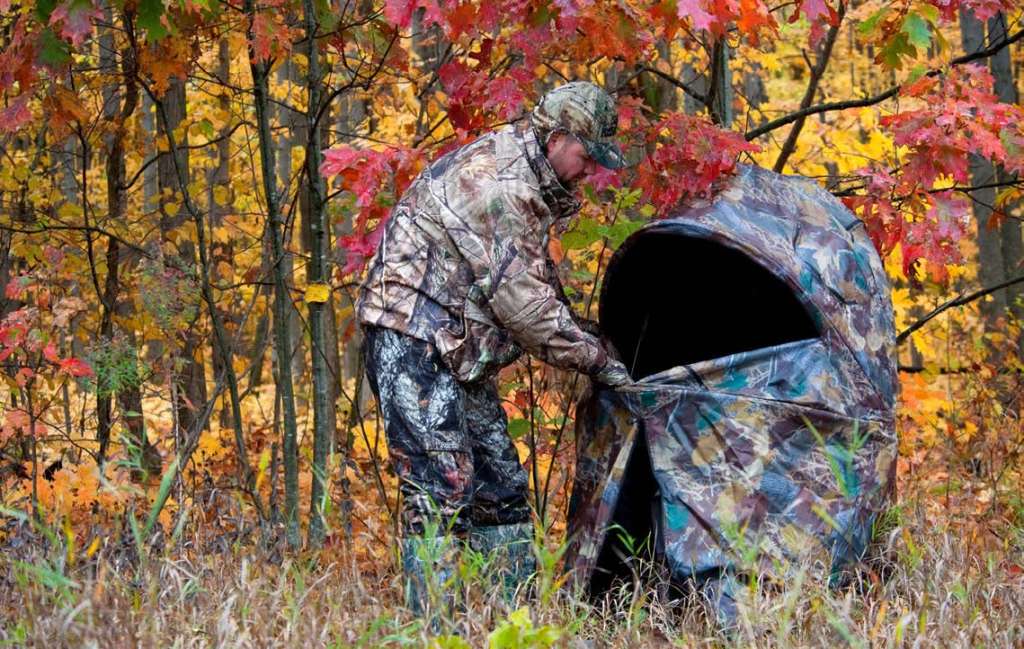Article by Mark Raycroft
It was still dark outside when the alarm brought our deer camp to life on the Wednesday morning of the November gun hunt. I rolled out of my bunk to peek outside and check the weather. It was raining. I stepped back into the dry, warm camp to discover that a couple of the guys had gone back to bed. A few others planned to stick around and have a leisurely breakfast and coffee, to wait to see if the rain would let up before bothering to head out. Three of us decided to go hunt.
Jake chose one of the tree stands that had been built earlier that fall. It was located at the end of a long field and was the best of the new stands, as it had a formidable roof to block out the rain. Behind the stand was a wooded ravine. It was an ideal bottleneck. His choice turned out to be the right one on that wet day. He shot the rainy-day 10-pointer early that afternoon as it attempted to cross the pinch point in the field toward the ravine.
Light rain is an awesome time to hunt for trophy; some would say it’s the best opportunity to see a mature buck outside of the rut. Even with a minimal budget, there’s a tremendous variety of gear, from varying sized pop-up blinds, umbrellas that can quickly strap to the tree trunk overhead, to the easy-to-pack rain poncho that can keep us dry and in the woods just for these days— those when deer least expect to see us. A forecast of light rain or drizzle, coupled with calm or no wind, is one of my most preferred hunts. If this weather occurs during the pre-rut, when bucks are cruising their home range, carving up trees with their gnarly antler bases, or tearing at the earth to make scrapes, they will be more active through the day than during other weather conditions. So, get the right gear to stay dry and comfortable and target days with light rain to be in your deer hunting hot spot all day long!
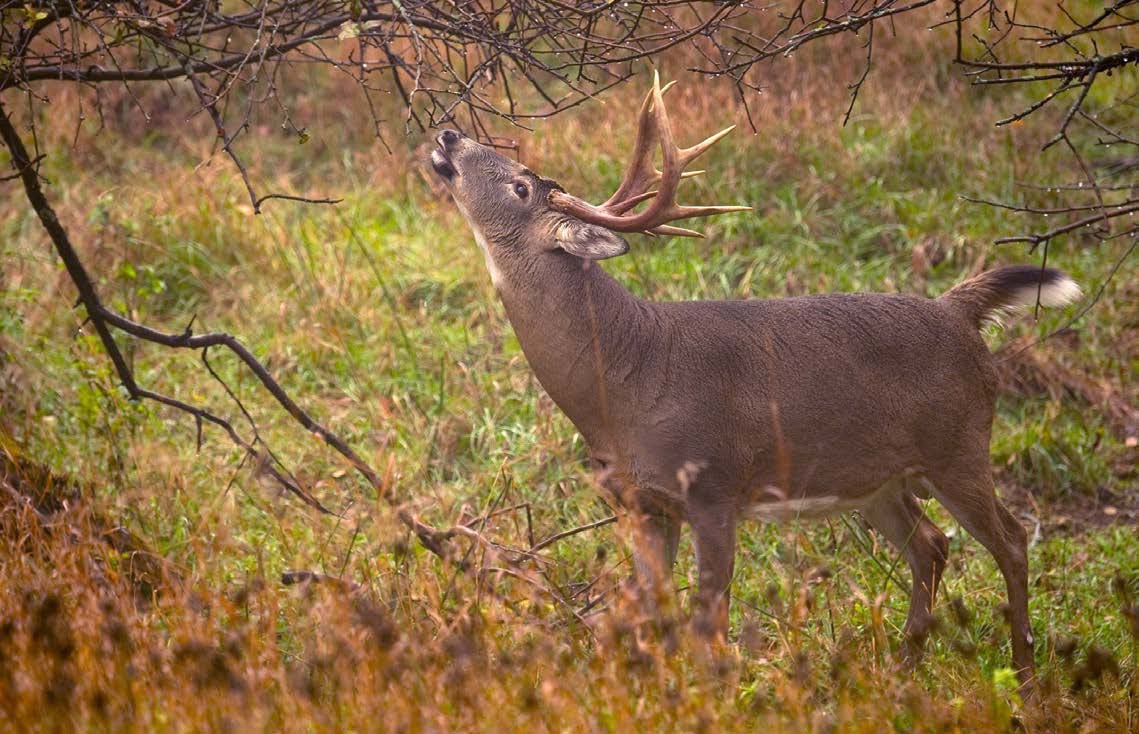
surprise them
Just Get Comfortable
The biggest deterrent for a hunter heading afield during wet weather is comfort. None of us enjoy sitting out in the rain if we’re exposed to the elements, risking slowly being soaked and then chilled. However, if we knew that we had a dry, comfortable ground blind or tree stand to keep watch from, we wouldn’t hesitate to try our luck in the rainy woods. After all, we’ve taken this time off work and our busy schedules specifically to hunt. So, why not take a chance and brave the weather? We can’t shoot a deer from the couch! And we don’t have to dig deep to discover that many big bucks do get shot on rainy days!
My father can testify to this. After 45 years of deer hunting, his biggest buck was taken on such a day. With only a rain poncho then, he decided to withstand the weather and hunt. He still hunted through the woods until he found a small grassy opening on a slope in the timber. Then, he sat on his hunting stool, leaned back against a tree and relaxed to the pitter-patter sound of the forest. He admits that he dozed a bit…only to open his eyes to a surreal sight! An 11-point buck was about to mount a doe a mere 40 yards from him!
He has no regrets to this day about his choice to hunt in the rain. In fact, he’s usually the first one out of the camp on rainy mornings. And, when somebody asks him about the big 11-point buck that’s mounted on his wall, he always retells the story with a big grin. It was one of the most memorable hunts of his life.
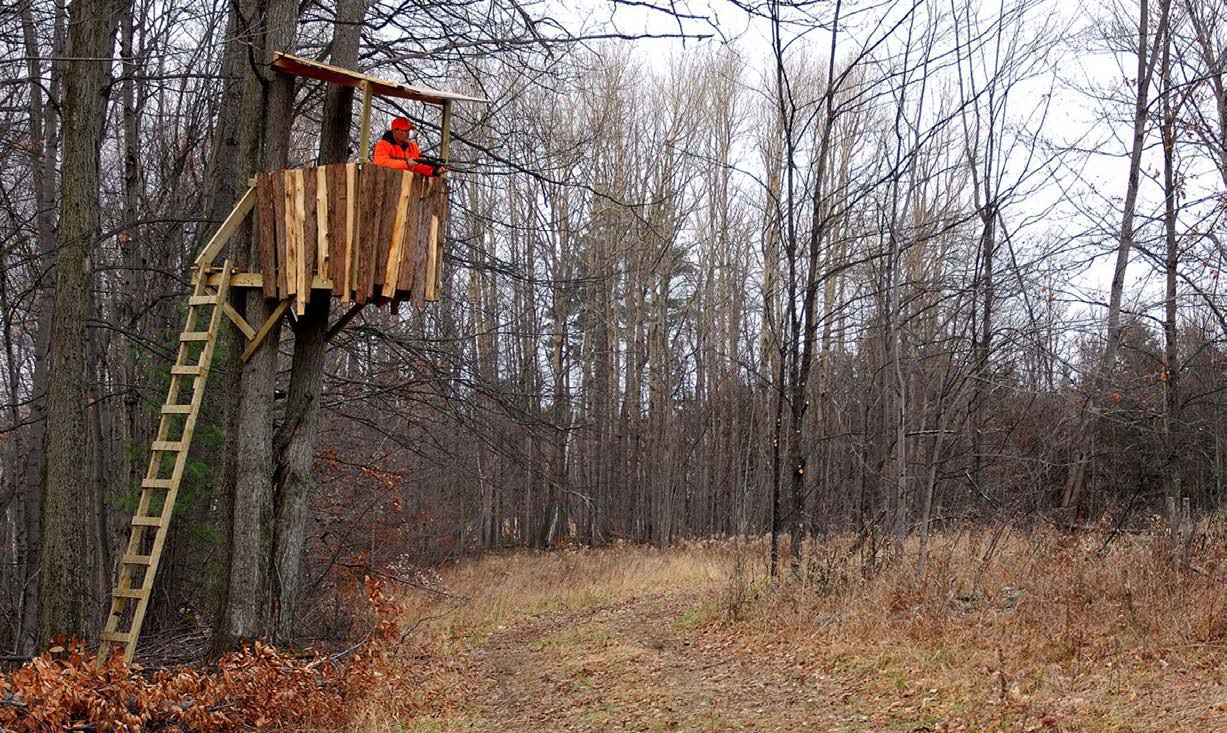
Wet Can Be Best
I know several highly successful deer hunters that never miss an opportunity to hunt a rainy day, as long as it’s not windy. Their experience has taught them that wet weather is possibly the best time to be in the woods to shoot a bruiser buck. Jake’s rainy day buck was the biggest deer shot at our camp that year.
The benefits of hunting on rainy days are many. Wet conditions eliminate noise as we walk to our stand. Rain also reduces scent dispersal, lowering the chances of a buck winding us. It also means that the deer can move around silently as well. I suspect, knowing how cautious trophy bucks are, that they also prefer to move around the woods on wet, silent leaves, as opposed to dry, crunchy ones.
Few images are as transfixing as a heavy-beamed buck appearing in the rainy woods in front of you. They somehow look bigger and meaner when they’re wet. Some experienced hunters firmly believe that the deer, especially the biggest bucks, have become conditioned over their years to know that humans are rarely in the woods during rainy weather. This means that they move around with more confidence and are less wary on wet days.
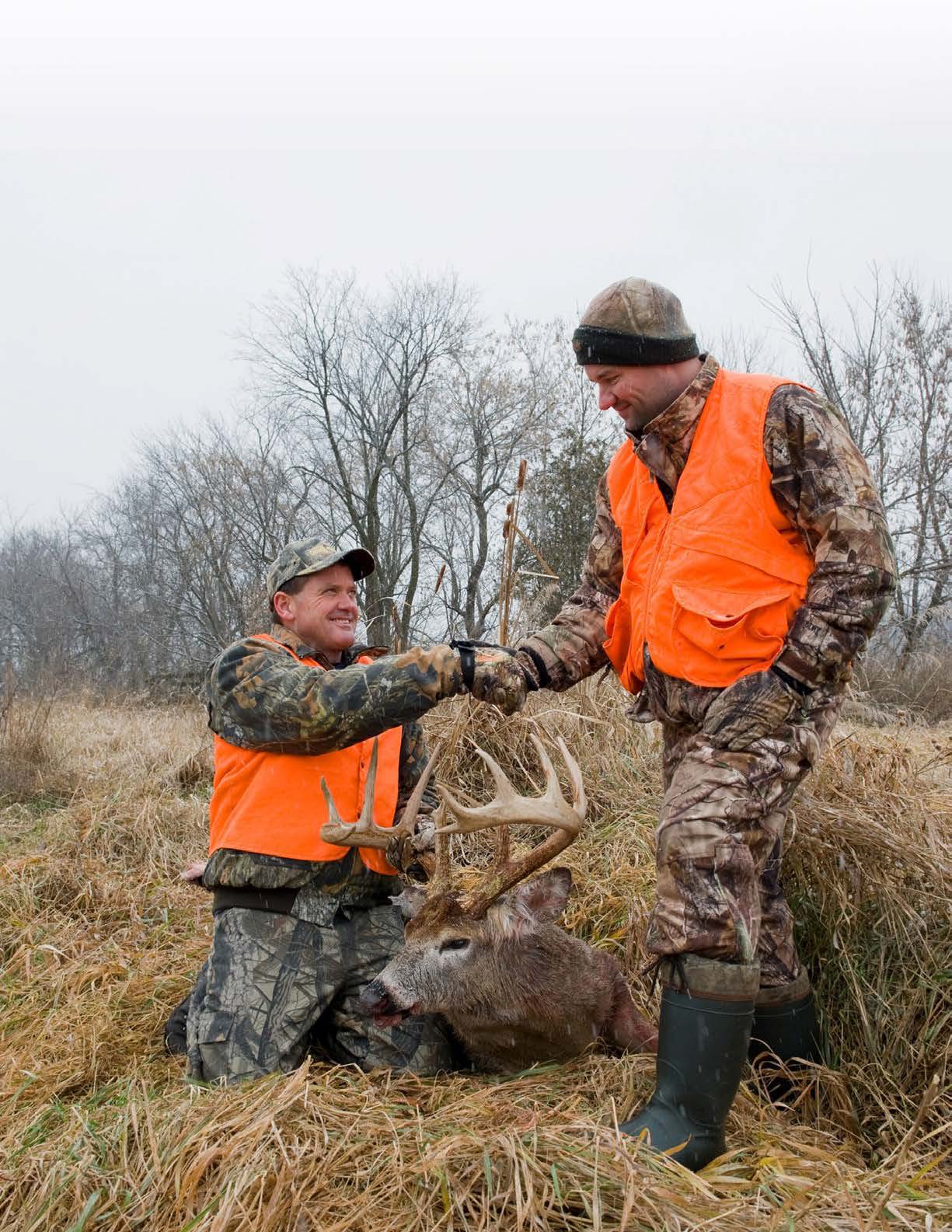
Plan Ahead
The best solution to hunting in rainy weather is to plan ahead. Before hunting season opens, invest time to create options so you are prepared for wet days. This may require scheduling a day to construct a ground blind or two, or to erect a sheltering tree stand. Twist my arm! I find building or hanging tree stands to be a lot of fun. If I construct a permanent stand, I make sure to use pressure- treated lumber for all supporting beams, braces, and for the ladder. And I always wear a safety harness whenever my feet leave the ground. I’ve heard too many stories of slips and falls that have cost other hunters dearly. It’s simply not worth the risk.
This leads me to another tip that was suggested by a friend. With so many people who live in rural settings switching to satellite television, there are a lot of unused TV antenna towers out there. I even saw some being advertised in the local paper at $25 a section for use as tree stand ladders. Just pick up a few self-locking ratchet straps and you can latch the antenna tower to a tree for easy access to your stand. They certainly won’t rot over the years and become unsafe. However, as with most surfaces, they can be slippery when wet…so always use caution.
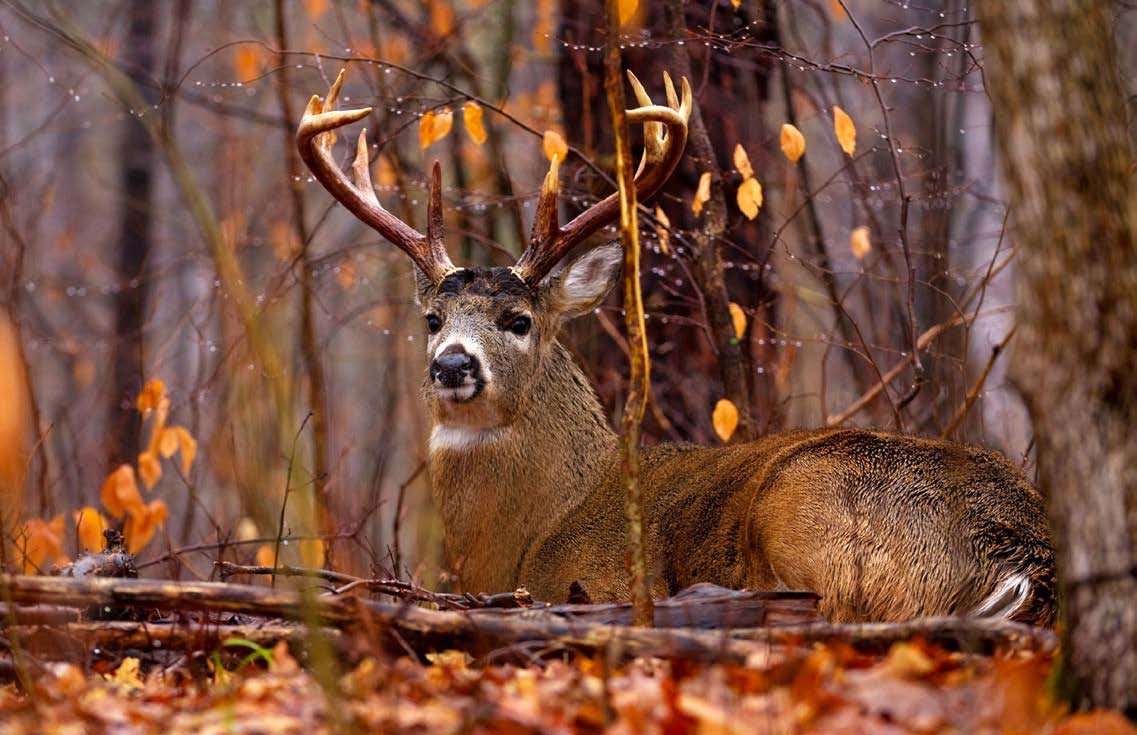
Make it Permanent
I enjoy constructing permanent stands on the properties where I hunt. I just make sure to have the landowner’s permission to do so. And be sure to carefully check the stand each autumn to ensure that it’s still solid or see if it requires reinforcing before climbing onto it.
If you hunt public lands, where permanent stands are not an option, you can still comfortably hunt in the rain by purchasing a camouflage pop-up ground blind. Nowadays, you can choose from a ton of outstanding models. Some are compact, inexpensive, and simple to set up. Others are more elaborate, costly, and roomy, but are still easy to carry and pop up. Almost all models fold down into a fairly light pack. Many have been designed to collapse into a backpack or have a sling strap for a hands- free carry in and out of the woods.
When hunting with a gun, my favorite go-to rainy-day chair blind for the past decade has been the Ameristep tent chair. It’s a typical folding chair that has a blind that flips over the top to protect from the elements. It’s ingenious! I wish I’d had patented this easy-to-use invention! It’s lightweight, has multiple window options, provides great shelter, and is totally mobile. If the weather improves, it can simply be lifted back over the head to become a regular folding chair. It’s a quick and mobile set-up that keeps my hunting location looking less repetitive and more challenging to predict for those wary Whitetails. Bonus!
When using a ground blind during gun season, especially on public lands, I make sure to attach a blaze orange bib to the top so that any passing hunters will notice my position. However, I do this in a way so it won’t flap in the breeze to alert deer, as it’s often the little things that make all the difference! Some pop-up blind manufacturers, like Ameristep, offer an attaching blaze orange cap accessory to go with their hub blinds.
If you use a portable, or climbing tree stand, you can buy one of the many camouflage umbrellas that are designed to be strapped to the tree above your head. This works fine as long as the rain is falling straight down.
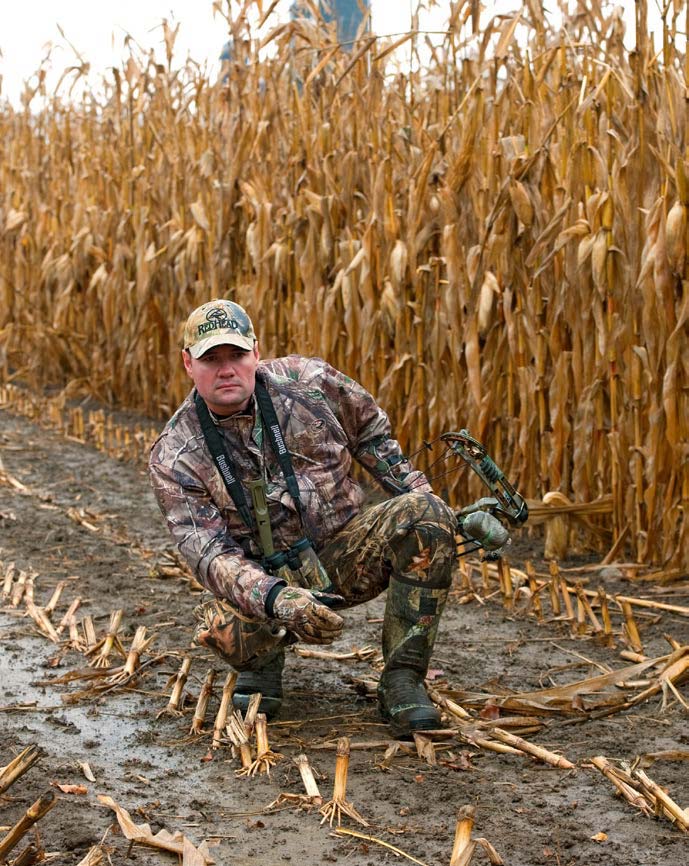
When It Pours
If it’s raining heavily, and it’s not the peak of the rut, deer will seek out shelter until the heavy rain subsides. There are two excellent strategies to consider for downpour days. One is to still hunt. Some experts swear by staying mobile on rainy days. The pouring rain reduces visibility for any bedded deer, and it impedes their senses of hearing and smell, too. And your footsteps will be silent as you slowly stalk through the woods. Focus your efforts around habitat that offers shelter to bedded deer. Look for pine plantations, stands of cedar or hemlock, and sheltered wooded ravines. Scan for deer bedded up against downed trees or rocks for added camouflage.
Small, low-lying thickets are another rainy-day bedding hotspot. Any habitat that offers concealment while also breaking the wind or blocking the rain is where you can expect to find deer. For thickets, watch where deer trails enter or exit the scrub and slowly still hunt your way through or along the downwind side of the thicket. Deer trails will likely be the easiest paths in and out of the dense cover. Move very slowly, only taking two to three steps before pausing and eyeing the brush ahead and beside you for concealed deer.
Knee-high, scent-free rubber boots are also important for keeping your feet dry on a still hunt. They minimize the amount of scent that you’ll leave behind in the woods, reducing the odds of spooking deer that may come through.
The second hunting option for downpour days is to hunt right in the buck’s bedding area. Again, I would strongly recommend scouting and finding such areas well before hunting season so that you can build a ground blind or tree stand in advance, or at least know exactly where you’d like to hunt from if using a pop-up or chair blind.
Look for the same type of sheltered habitats that were described above, but with this strategy, go in early and plan to hunker down and stick it out all day in your concealed blind or stand. I know of some hunters who can only last for three to four hours on a watch before becoming antsy and having to move. But, trust me, if you’ve chosen your location carefully and there’s buck sign in the vicinity, patience is your best ally. Plan smartly to accommodate the wet conditions because your long wait will be quickly forgotten when you’re dragging out a heavy-beamed buck!
Dress for Success
This doesn’t mean a three-piece suit and a tie! To me, being “dressed for success” means warm clothes, boots, and camo!
As with cold wintry days that can happen late in the season, it’s equally important to dress smartly on rainy days. The more comfortable you are, the longer you’ll hunt. I wear several layers of breathable clothing to keep warm on a long damp day, and my outer layer is always waterproof.
When still hunting, it’s important not to overdress. If you become too hot and break out in a sweat while still hunting you can get just as wet from the inside out— which ultimately leads to becoming cold. For times that I plan to still hunt instead of watching motionless from a stand, I prefer to wear a couple of layers of merino wool under a quiet, waterproof outer layer.
I carry a pack with an extra wool underlayer, socks, an additional lightweight insulating layer, and a second hat, along with water, trail mix, cell phone, headlamp, and a fire starter.
The Blood Trail Challenge
When bowhunting on a rainy day, be extra careful to ensure you make a well-placed shot. This is very important for any hunt, but it’s especially so when the ground is wet, in order to minimize the distance that the deer travel afterward.
A heart shot is best but hitting both lungs will also keep the tracking distance to a minimum. The reasoning regarding this is that if it’s pouring hard, there’s a chance the rain will wash away some or all of the blood trail. Hopefully, the deer won’t go far, and you’ll recover it fairly easily, as the blood trail should be evident. But, if difficulty arises, it may be worth knowing someone who owns a dog that will track.
Wet conditions are great for keeping scent on the ground, and as long as it’s legal to use a dog to track a downed deer where you hunt, that may be the best option if the circumstances warrant. It’s important to keep the dog on a lead so it doesn’t run off on the trail and lose you in pursuit of the deer. And there’s always a slight chance that the deer is not dead yet. If so, the last thing you want is for it to be pushed further.
Always give an arrowed deer at least an hour before attempting recovery. An 8-to-10-foot lead or rope on the dog is enough to provide you with control of the dog while separating you enough so the dog is focused on the scent trail and not you.
Conclusion
When we’re prepared, rainy days can be as comfortable as sunny, bluebird days to be in the woods. And since so few hunters go afield during wet weather, most deer don’t expect to encounter humans during rainy days. They tend to let down their guard and move about more freely. The only exception is when it’s pouring rain, but then we know where to look for them. As long as it’s not the peak of the rut, the teeming rain will cause them to seek out a sheltered area to bed. We just need to sneak in there and wait it out under a cover of some sort. Many hunters have been rewarded for such determination and persistence with a handsome trophy buck.
Mark’s Choices for Rainy Day Hunts
Mark’s favorite single-person chair blind for gun- hunting Whitetails: Ameristep Tent Chair Blind
The best all-round, comfortable wool hunting socks that Mark uses: Darn Tough Heavyweight Sock
Mark’s favorite wool-base layer: Kuiu Ultra Merino125
Mark’s favorite hunting boots this past year: Muckboots Fieldblazer Classic
Mark’s favorite raincoat and rainpants – The Kuiu Yukon rain jacket and pants. They’re lightweight, packable, and durable for all big-game hunting, and the pants can be removed without taking your boots off. It’s a cool design! Kuiu Yukon Rain Jacket
Article by Mark Raycroft
Photos © Mark Raycroft Photography
Per our affiliate disclosure, we may earn revenue from the products available on this page. To learn more about how we test gear, click here.



